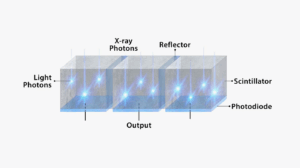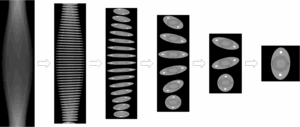In recent years, multiple clinical trials have demonstrated how cardiac CT used as a front-line test can provide a reliable diagnostic tool and help improve clinical outcomes for patients (e.g., SCOT-HEART, Scottish Computed Tomography of the HEART1, PROMISE, Prospective Multicenter Imaging Study for Evaluation of Chest Pain2, and CONSERVE, Coronary Computed Tomographic Angiography for Selective Cardiac Catheterization3.
As a result, it has been incorporated into several clinical practice guidelines. In 2016, the National Institute of Health and Care Excellence (NICE) in the UK added coronary computed tomography angiography (CCTA) as the “first test for low-risk, stable chest pain patients without known history of coronary artery disease (CAD4)”. The European Society of Cardiology Clinical Practice guidelines on Chronic Coronary Syndromes acknowledged the role of CCTA as a “first-line tool for evaluation of chronic coronary syndromes for low- to intermediate-risk patients” (class I, level of evidence B recommendation5). The 2021 AHA/ACC/ASE/CHEST/SAEM/SCCT/SCMR Guideline for the Evaluation and Diagnosis of Chest Pain recommended CCTA at the highest class I, level of evidence A as the first line test for evaluating stable chest pain in intermediate-to-high risk patients with no known CAD6.
The growing evidence for the utility of CCTA and the addition of CCTA in guidelines has resulted in increasing global utilization of cardiac CT. For example, in the United States, the number of CCTA procedures has increased from 1.6 Million to 5 Million (+275%) in one year from 2022 to 20237.
While the rapid adoption of cardiac CT imaging and the underlying technical advances over the last two decades have been impressive, cardiac motion artifacts have remained a challenge in general, potentially resulting in reduced clinician confidence when reading cardiac CT images.
In this paper, we discuss the recent advances in SnapShot Freeze (SSF) technologies that refine cardiac imaging by expanding the breadth of intelligent motion correction applications. Worldwide users and researchers have conducted multiple studies to evaluate its diagnostic performance in Cardiac CT imaging. This white paper summarizes the evidence from key studies to provide references for practitioners incorporating this SSF technology into their clinical practice.8
- Newby D.E., Adamson P.D., Berry C., et al. Coronary CT angiography and 5-Year risk of myocardial infarction. N Engl J Med. 2018;379:924–933. ↩︎
- Douglas P.S., Hoffmann U., Patel M.R., et al. Outcomes of anatomical versus functional testing for coronary artery disease. N Engl J Med. 2015;372:1291–1300 ↩︎
- Chang H.J., Lin F.Y., Gebow D., et al. Selective Referral using CCTA versus direct referral for individuals referred to invasive coronary angiography for suspected CAD: a randomized, controlled, open-label trial. JACC Cardiovasc Imaging. 2019;12:1303–1312. ↩︎
- Moss A.J., Williams M.C., Newby D.E., Nicol E.D. The updated NICE guidelines: cardiac CT as the first-line test for coronary artery disease. Curr Cardiovasc Imaging Rep. 2017;10:15. ↩︎
- Knuuti J.W.W, Saraste A., Capodanno D., Barbato E., al Funck-Brentano Cet. ESC Guidelines on the diagnosis and management of chronic coronary syn-dromes: The Task Force for diagnosis and management of chronic coronary syn-dromes of the European Society of Cardiology (ESC) Eur Heart J. 2019:1–71. ↩︎
- Gulati M., Levy P.D., Mukherjee D., et al. 2021 AHA/ACC/ASE/CHEST/SAEM/SCCT/ SCMR guideline for the evaluation and diagnosis of chest pain: A Report of the American College of Cardiology/American Heart Association Joint Committee on Clinical Practice Guidelines. Circulation. 2021 Cir0000000000001029. ↩︎
- 2023 CT Market Outlook Report, IMV Medical Information Division, part of Science and Medicine Group. ↩︎
- Most of the publications cited in are single center studies and varied by clinical indications, study protocols and comparison methods. The results and conclusions obtained in these studies are only applicable to the specific studies cited and may not be generalizable or reproducible in your practice.
Images in this white paper are not from the publications cited. These are additional sample images from clinical use. ↩︎



